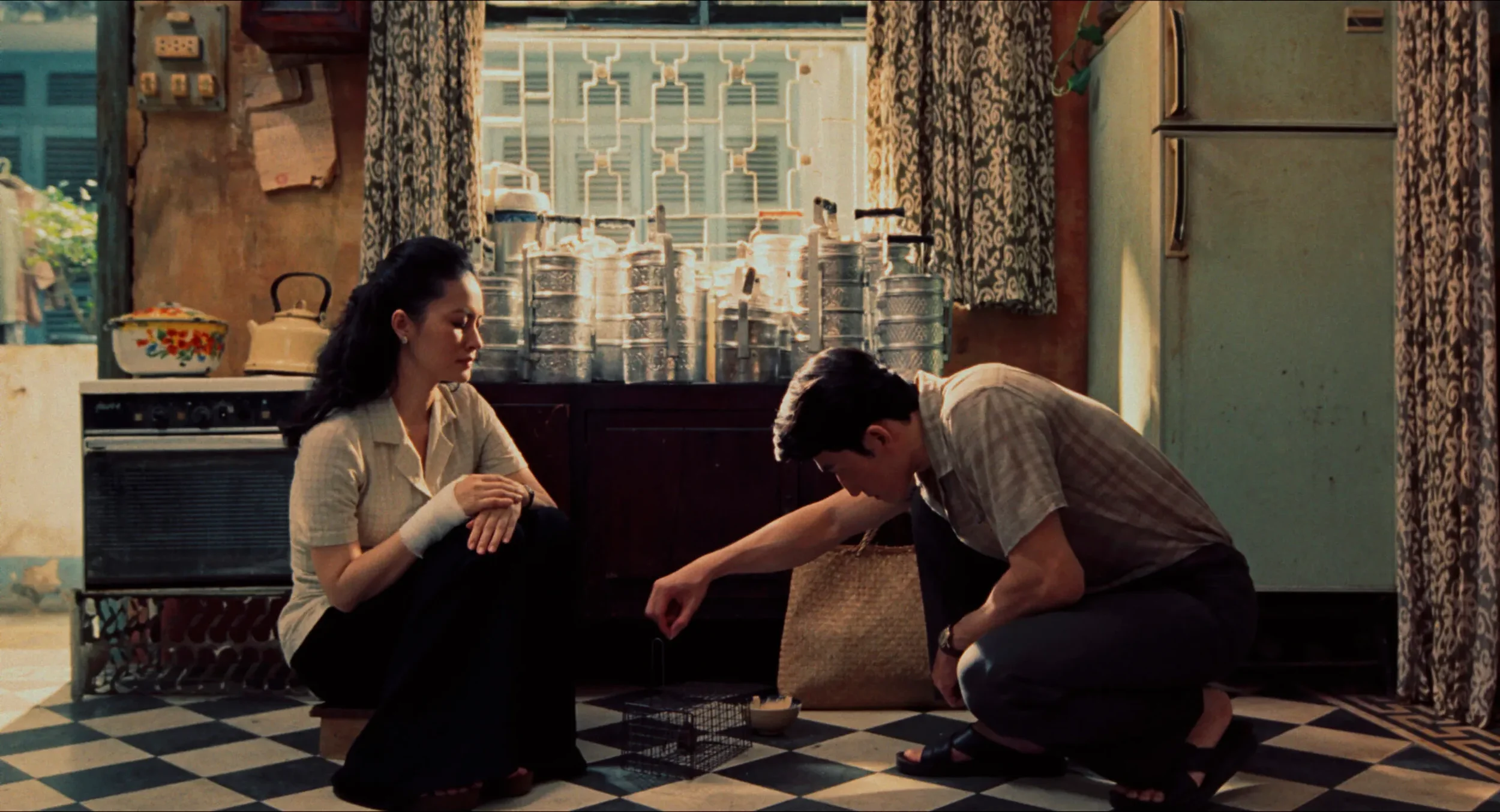‘How To Get Away From My Toxic Family’ REVIEW: Home Is Where the Hurt Is
‘How To Get Away From My Toxic Family’ REVIEW: Home Is Where the Hurt Is
Arsenio De Dios (Zanjoe Merudo) and his toxic family in How To Get Away From My Toxic Family | Still courtesy of KreativDen
This review contains spoilers ahead.
Every year, most Filipino films and their centrality on family, love, guilt, and sacrifices have never left the cinemas and popular streaming platforms. As each film tends to portray a united theme — love, family, and religion — we always see how each plot serves its purpose, in its own unique way.
How To Get Away From My Toxic Family, a family drama film directed by Lawrence Fajardo, tends to shift this anchor into a different direction, even if some say that its similarity with Jun Lana’s And The Breadwinner Is… is clearly evident. However, I beg to differ.
The film offers a modern view to the Filipino audience, often relaying its message in its cinematography and symbolism rather than its dialogue. The light portrayal of sadness, guilt, and stress directs an implied, but vague annotation into how Filipino breadwinners continue to cope with what they have.
Indeed, it really showed how one can get away from their toxic family. It changes how the Filipino household must change their views and adaptations into a more sincere and genuine perspective that should consider each one’s feelings, not just the breadwinner.
Zanjoe Merudo’s character, Arsenio De Dios, is already shown as a hardworking overseas Filipino worker in Dubai. He works as a cook for five years after finishing his studies, and obviously, is expected to help his family in the Philippines financially. After his father died, he served as the sole breadwinner of the family. His elder sister, as a teacher, struggled after getting scammed. His elder brother, a taxi driver, has a difficult time as a heavy drinker. And his younger sister, in the hopes of finishing college, is pregnant.
Susan Africa, who played Aurora, portrays an immensely convincing single mother who constantly puts the blame on Arsenio’s fiancée, Helen (Kim Rodriguez). Her character plays a heavy role in defending his eldest son, Domingo Jr. (Richard Quan), who has a very difficult time quitting his vices. She would always remind Arsenio that his family, especially Domingo Jr., still deserves a second chance in life. In her words, “Hindi naman kami ibang tao,” implying that no matter how much pressure and problems Arsenio faces, he must endure them for his family.
Besides Merudo and Africa’s incredible and tear-jerking show of emotions, movements, and facial expressions, the film’s cinematography also sparked a special interest in me. The characters’ blocking, along with their dialogue, add up to the intensity of emotions: guilt and hope.
Arsenio, being the third member of the family, has to keep their bond intact. Jingjing (Juharra Asayo) — Domingo Jr.'s one and only daughter — kept their beliefs and notions within the household. As the youngest in their family, she often shows hope, light, and the joy that children bring to adults. Despite their financial difficulties throughout the film, Arsenio shows genuine love for her as her father neglected her constantly, mainly shown through his alcoholic tendencies.
Each character depicts a forceful impact on Arsenio's life. The people around him tested his limits, and we see how each of them either fooled or supported him throughout the film. Indeed, it really is difficult to be your own family’s enemy–but we also see how this can either be a good or bad thing for us.
Religious Hypocrisy
At the beginning of the film, the De Dios family is seen celebrating the Feast of the Black Nazarene, a popular religious procession held every ninth of January at Quiapo, Manila. This particular devotion among the Filipino community holds a very special significance in many Filipino Catholics’ hearts, as this love and faith continue to thrive in different households and streets every year.
This devotion is evident throughout the film, as the household’s primary values center on love and religion. The ladies of the family are seen wearing a Feast of the Black Nazarene Shirt as they prepare various meals for the religious occasion, often portraying a traditional-leaning belief system and practices within the family.
One of the most mesmerizing aspects, as well, is how the family’s religious devotion (shown through their celebration and shirt) contrasts with the words coming out of their mouth. As they prepare and share meals for the Feast of the Black Nazarene, they shut down Arsenio’s decision to stay in the Philippines and stop working as an OFW. The family hints that it was Helen's idea for them to stay in the country, especially since Arsenio shared that they were going to get married. Even his siblings were in shock, which implies complete rejection of his personal decisions and choices regarding his fiancée.
Religious hypocrisy is also one of the most noticeable themes of the film, as most family drama genres showcase how religion can make your family grow and stay intact. How To Get Away From My Toxic Family shows the opposite — it is not always rainbows and butterflies; it can also be thunder and storms. Knowing your God does not exempt you from hurting your loved ones, most especially in cases where respect is always seen as a reason for you to stay in your family.
Still courtesy of KreativDen
The Never-Ending“Utang na Loob” Culture
Being an overseas Filipino worker does not exempt you from making decisions for yourself. Arsenio’s character shows true strength and endurance in a family that thinks otherwise, and clearly, it was not the best decision for him to stay. As the film progresses, we see how his decisions were not just for him — he strives and sacrifices continuously to satisfy the needs and wants of his family.
Susan’s favorite lines, “Hindi naman kami ibang tao,” and “Hindi ito ang panahon para maging madamot,” showcase the toxicity that most breadwinners face in their everyday lives. When earning money, they do not feel the satisfaction of success because of the never-ending responsibilities that come with it. In short, most OFWs strive for a better life abroad not for themselves, but for their families in the Philippines.
Even more so, these utterances are not new to the Filipino household anymore. Parents who decide for their children to financially support them often lack the understanding that this responsibility should not even be a responsibility in the first place. Susan, who showed genuine hatred towards Helen, a successful and prosperous woman, is a smart representation of how Arsenio’s life could have been after already working for five years abroad.
The film’s representation of the family is not rooted in poverty. They are a simple middle-class family who seek a better life, with Arsenio being the one and only “hope” of the family. But with the hidden decisions and choices that his family made, it became more difficult for them to understand each other, especially when Arsenio’s mother would always strike back with condescending statements: Anong silbi ng pag-abroad mo kung wala kang ipon? Wala kang utang na loob. Kuya mo pa rin ‘yun. Hindi ito ang panahon para maging madamot. Being an OFW costs you loneliness, guilt, and pressure from your one and only family.
Conclusion
Films about breadwinners are already over-explored. Every year, we see how their struggles are portrayed in different angles, usually revealing their hidden feelings, emotions, and capabilities to do more and more until they have reached their limit. Most also showcase the concept of never giving up for the sake of your own family, because after all, family is what completes you.
How to Get Away from My Toxic Family is a brave and bold film on understanding that such is not always the case. Sometimes, being able to make decisions for yourself can fix you, even if it means leaving your family behind and starting all over again. And maybe even better: selfishness can either make or break you, and Arsenio shows how both decisions impact him.









